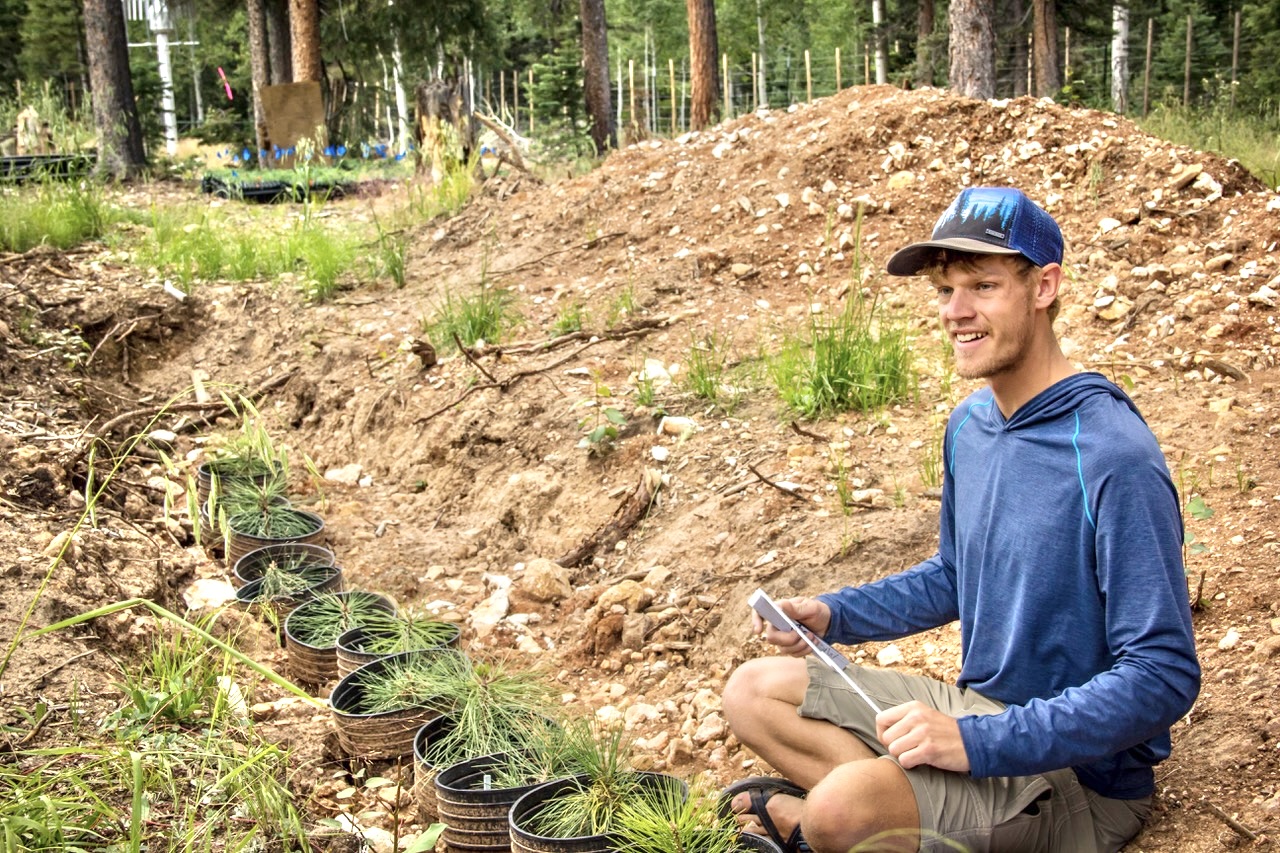The ground under our feet is teeming with complex communities of plants and fungi. Michael Remke, a researcher and lecturer at Fort Lewis College in Durango, CO, identifies the connections native plant communities have with their mycorrhizae (fungi associated with plant roots). Here, Science Moab talks to him about reforesting programs, rebuilding and replanting after high-intensity disturbance events, and utilizing next-generation sequencing to predict the genetic make-up of soils already long-gone.
Science Moab: Can you tell us what you’ve been working on recently?
Remke: A lot of my work has been really focused on this idea that plants and their associated mycorrhizal fungi are coadapted to one another. I’ve been particularly interested in testing if a plant and its coadapted mycorrhizal fungi provide the same benefit to each other as a plant living in symbiosis with a novel suite of soil organisms. In other words, if we disrupt that coadapted lifestyle, how does the plant perform when trying to make new friends? I like to further that by testing what happens when we force plants to live with new friends in new climatic environments. Do they benefit from their coadapted good symbiotic friends or do they actually receive more benefit from trying to make friends with the biota that have lived in the new environment in which plants are trying to live?
Science Moab: Why should people care about revegetation and mycorrhizal relationships?
Remke: We’ve seen lots of disturbances on the Colorado Plateau, from increased grazing to drought stress. The result has been more bare soil that’s very susceptible to wind erosion. I think we’ve generally seen an increase in the frequency of dust storms, which can be a public health issue, cause driving hazards, and get deposited on mountain snowpack and accelerate snowmelt. That can cause changes in the amount of water in the Colorado River Basin.
There is a dire need to start restoring some of these landscapes that have degraded and one important point of interest is learning how to better restore plant communities so that we can have vegetative plant cover that helps stabilize soil, prevent some of that erosion, and provides forage for our native ungulates as well as domestic cattle. I think we need to ask ourselves the reason why we need to revegetate a site. If a soil disturbance could have altered native mycorrhizal communities, then we have compelling reasons to believe that we could increase the drought resistance of, for instance, ponderosa pine seedlings by inoculating them with native mycorrhizal communities. Understanding when and where we can enhance restoration success with soil organisms is a really important perspective on some of these revegetation strategies.
Science Moab: How do you measure whether a mycorrhizal community remains intact after a disturbance like a fire, and what are some examples of when it has or hasn’t done so?
Remke: How we measure microbial communities is a really important issue. We haven’t had the tools to measure microbial communities until relatively recently, and now those tools are becoming cheaper. We’re talking about next-generation sequencing, an advanced DNA extraction procedure, followed by amplifying genes of multiple organisms within a single sample to understand a microbial community.
After a fire, the first things to consider are the intensity and severity of the fire. Where fire burns at low intensity on the edge, there’s almost no change to the soil microbial communities, even at the soil surface. But as you move to the center of the fire, and the intensity gets hotter, we start to see significant loss or sterilization of the soil, even up to like 30 centimeters in depth. Some of the work that I’ve been doing in Southwest Colorado has shown that at depths of 30 centimeters in low severity or moderate severity fire, microbial communities are totally unaffected by fire. But when you get to high severity fire, 30 centimeters of depth starts to see some alteration of soil microbial communities.
We’re starting to learn now that the recolonization of soil microbes following an event like fire can take a really long time. But we’re also starting to show that recolonization does occur, and it generally occurs from depth upward. Soil depths of 50 centimeters are starting to contribute to the recovery of soil depths of 30 centimeters in high severity fires. We don’t know how long it takes to re-establish a community that was there prior. It might be that it never happens if the plant community is forever altered.
Science Moab: How can your research make a difference in the realm of forest preservation?
Remke: Where we can make a difference is in knowing that intact ecosystems are really important. That means a few things for the management and mitigation of fires. The classic forest restoration perspective is really important to remember: removing small trees while preserving large, older trees on the landscape can help reduce fire risk, while also helping support the intact ecosystem that does exist. An important piece of that is letting fire play its natural role as much as it can. It certainly feels like we have had a significant hand in altering ecosystems, letting fire become more intense through climate change.
One thing that my research really enlightened me to is the fact that ecosystems are really complex, and anywhere where intact ecosystems do exist are opportunities to preserve them. If we feel that we want something, we can use what we know about ecosystems to manifest it with some degree of intentionality. So if we want to restore forests, we have to restore ecosystems. That means having a perspective on soil biota, which might help us better achieve our goals.
Science Moab is a nonprofit dedicated to engaging community members and visitors with the science happening in Southeast Utah and the Colorado Plateau. To learn more and listen to the rest of this interview, visit www.sciencemoab.org/radio.




